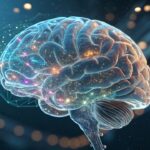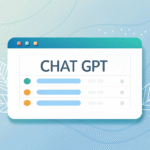Now Reading: How to remember anything you read: A complete guide to reading retention and comprehension
-
01
How to remember anything you read: A complete guide to reading retention and comprehension

How to remember anything you read: A complete guide to reading retention and comprehension
Reading is one of humanity’s most powerful tools for acquiring knowledge, yet most people struggle with a fundamental challenge: remembering what they read. Studies show that without deliberate retention strategies, we can forget up to 70% of newly learned material within 24 hours. This phenomenon, known as the forgetting curve, affects everyone from students cramming for exams to professionals trying to stay current in their fields.
The good news is that remembering what you read isn’t a matter of having a “good memory” or superior intelligence. It’s a skill that can be developed through proven techniques backed by cognitive science research. This comprehensive guide will transform your reading from a passive activity into an active learning experience, helping you retain and recall information more effectively than ever before.
Chapter 1: Understanding how memory works when reading
The science behind reading retention
Before diving into specific techniques, it’s crucial to understand how your brain processes and stores information from text. Reading comprehension and retention involve multiple cognitive processes working together: working memory, semantic processing, and executive function. When you read, your brain doesn’t simply absorb information like a sponge it actively constructs meaning by integrating new information with existing knowledge.
The dual-coding theory, developed by Allan Paivio, explains why some information sticks better than others. Your mind processes information through two distinct channels: verbal and visual. When both channels are engaged simultaneously, you create stronger memory traces that are easier to retrieve later. This is why combining text with imagery, diagrams, or mental visualization significantly improves retention.
The forgetting curve and memory consolidation
Hermann Ebbinghaus’s research on the forgetting curve reveals that without reinforcement, we lose information rapidly after initial learning. However, each time you actively recall or review information, you strengthen the neural pathways and extend the time before forgetting occurs. This process, called memory consolidation, is why repetition and review are essential for long-term retention.
Chapter 2: Setting the foundation for better reading retention
Active vs. passive reading
The fundamental difference between readers who remember and those who forget lies in their approach. Passive reading involves simply moving your eyes across the page, while active reading engages multiple cognitive processes simultaneously.
Active reading characteristics include:
. Reading with specific questions in mind
. Constantly monitoring comprehension
. Making connections to prior knowledge
. Predicting what comes next
. Questioning the author’s arguments and evidence
. Summarizing key points mentally or in writing
Research consistently shows that active reading strategies significantly enhance comprehension, retention, and critical thinking skills. By transforming reading from a passive experience into an interactive process, you develop deeper connections with text and substantially increase knowledge retention.
Setting clear reading purposes
Before opening any book or article, establish a clear purpose for reading. Are you seeking specific information, trying to understand complex concepts, or looking for practical applications? Your reading purpose should guide your attention and help you filter relevant information.
Different reading purposes require different strategies:
. Information gathering: Focus on facts, data, and specific details
. Conceptual understanding: Emphasize relationships between ideas and underlying principles
. Critical analysis: Question assumptions, evaluate evidence, and consider alternative perspectives
. Practical application: Look for actionable insights and implementation strategies
Creating an optimal reading environment
Your physical and mental environment significantly impacts retention. Choose a quiet space free from distractions, ensure good lighting, and eliminate potential interruptions like phones or notifications. Mental preparation is equally important approach reading with curiosity and engagement rather than obligation.
Chapter 3: The pre-reading phase – Priming your mind for retention
a. The blank sheet method
One of the most effective pre-reading techniques is called the “blank sheet” method. This simple but powerful approach involves:
1. Taking out a blank sheet of paper before reading
2. Writing down everything you already know about the topic (creating a mind map)
3. Adding new information to the map after each reading session (using a different colored ink)
4. Reviewing the mind map before your next reading session
5. Storing completed mind maps in a binder for periodic review
This technique works because it activates your existing knowledge, creating mental hooks for new information. When you encounter related concepts while reading, your brain can immediately connect them to your existing knowledge framework.
b. Survey and preview techniques
The SQ3R method begins with surveying the text before detailed reading. This involves:
. Reading the title, subtitles, and chapter headings
. Examining illustrations, graphs, and captions
. Reading the first and last paragraphs
. Scanning for keywords and key concepts
. Reviewing any summaries or conclusions
This preview creates a mental framework that helps organize new information as you encounter it during detailed reading.
Generating questions
Effective readers approach texts with questions in mind. As Chinese scholar Huang Zongxi noted centuries ago: “If you read with small questions in mind, you learn small things. If you do so with big questions in mind, you learn big things. If you do so with no question in mind, you learn nothing.”
Generate questions during your preview:
. What is the main argument or thesis?
. How does this relate to what I already know?
. What evidence supports the author’s claims?
. How can I apply this information?
. What are the implications of these ideas?
Chapter 4: Active reading strategies for maximum retention
a. Strategic annotation and note-taking
Annotation transforms passive reading into active engagement. Develop a consistent system for marking text:
Color-coding systems: Use different colors for different types of information (green for main ideas, blue for supporting evidence, orange for questions, purple for connections to other material).
Symbolic annotation: Create a personal symbol system using stars, arrows, question marks, and exclamation points for rapid marking without interrupting reading flow.
Marginalia dialogues: Write brief comments, questions, agreements, or disagreements in margins. This creates a conversation with the text that enhances engagement and retention.
b. The Cornell note-taking system
The Cornell method, developed by Walter Pauk at Cornell University, provides a systematic format for organizing notes that facilitates both learning and review.
The Cornell system divides each page into three sections:
. Note-taking area (right side, largest section): Record main points, supporting details, and examples
. Cue column (left side, narrow): Write keywords, questions, and memory cues after reading
. Summary section (bottom): Synthesize main ideas and key takeaways
To use the Cornell method effectively:
1. During reading, record information in the main note-taking area using concise sentences and abbreviations
2. Leave space between different topics for later additions
3. After reading, create cues and questions in the left column that correspond to your notes
4. Write a summary of the entire page in the bottom section
5. For review, cover the notes and use the cues to test your recall
This system creates built-in retrieval practice opportunities and transforms your notes into effective study materials.
c. Chunking complex information
When facing difficult or dense material, break it into manageable chunks. This technique, called chunking, helps organize information into meaningful units that don’t overwhelm working memory.
Chunking strategies include:
. Reading one paragraph at a time and summarizing before moving on
. Breaking complex concepts into component parts
. Grouping related information together
. Using visual or conceptual boundaries to separate different ideas
After processing each chunk, pause to ensure understanding before continuing. This prevents cognitive overload and ensures proper encoding of information.
Chapter 5: Visualization and memory palace techniques
a. The power of visual memory
The human brain processes visual information much faster than text, making visualization a powerful tool for retention. Research shows that engaging multiple senses during learning creates stronger neural connections and improves long-term memory.
To leverage visual memory:
. Create mental images of key concepts while reading
. Visualize processes, relationships, and sequences described in text
. Draw simple diagrams or sketches of important ideas
. Use colors and spatial arrangements in your notes
b. Building memory palaces for reading
The memory palace technique, also known as the method of loci, can dramatically improve retention of information from reading. This ancient technique involves associating information with specific locations in a familiar place.
To create a memory palace for reading:
1. Choose a familiar location: Your home, office, or a well-known route work best
2. Plan a consistent route: Establish a logical path through your chosen location
3. Assign information to locations: Place key concepts, facts, or ideas at specific spots along your route
4. Make associations vivid: Use exaggerated, humorous, or unusual imagery to make connections memorable
5. Practice the journey: Mentally walk through your palace regularly to reinforce the associations
For example, if reading about the elements of effective communication, you might place “active listening” at your front door (because it’s the first step), “clear messaging” in your living room (the central gathering place), and “feedback” in your kitchen (because it nourishes relationships).
c. Advanced visualization techniques
Beyond basic mental imagery, advanced visualization techniques can further enhance retention:
Multi-sensory engagement: When visualizing concepts, include sounds, textures, smells, and physical sensations. This creates richer memory traces that are easier to recall.
Emotional connections: Attach emotions to the information you’re learning. Emotional content is processed differently by the brain and is typically better remembered.
Personal relevance: Connect new information to your personal experiences, goals, or interests. The more personally meaningful information is, the better you’ll remember it.
Chapter 6: Spaced repetition and long-term retention
a. Understanding spaced repetition
Spaced repetition is one of the most scientifically validated techniques for long-term retention. This method involves reviewing information at gradually increasing intervals, with each review session occurring just before you’re likely to forget the material.
The power of spaced repetition lies in its optimization of memory consolidation. Each time you successfully recall information, you strengthen the neural pathways and extend the forgetting curve. The intervals between reviews can be gradually increased because the memory becomes more stable with each reinforcement.
b. Implementing spaced repetition for reading
A typical spaced repetition schedule might look like:
. First review: 1 day after initial reading
. Second review: 3 days after first review
. Third review: 7 days after second review
. Fourth review: 14 days after third review
. Fifth review: 30 days after fourth review
For each review session:
1. Test your recall before looking at your notes
2. Identify areas where memory has faded
3. Re-read and re-study weak areas
4. Adjust future review intervals based on performance
c. Digital tools for spaced repetition
Modern technology can automate spaced repetition scheduling:
- Anki: A popular flashcard app with built-in spaced repetition algorithms
- Quizlet: Offers spaced repetition features for vocabulary and concept review
- RemNote: Combines note-taking with spaced repetition functionality
- Obsidian: Knowledge management software with spaced repetition plugins
These tools adjust review intervals automatically based on your performance, ensuring optimal timing for each review session.
Chapter 7: Mnemonic devices and memory techniques
a. Types of mnemonic devices
Mnemonic devices are memory aids that help organize and recall information more effectively. Research shows that people who use mnemonic techniques significantly outperform those who rely on contextual learning or free-learning approaches.
Acronyms and Acrostics: Create memorable abbreviations or sentences where each letter represents key information. For example, “SMART goals” (Specific, Measurable, Achievable, Relevant, Time-bound).
Rhymes and Songs: Information set to rhythm or melody is easier to remember. This is why advertising jingles stick in your mind long after hearing them.
Association Techniques: Link new information to something you already know well. The stronger and more unusual the association, the better the retention.
Keyword Method: For foreign language vocabulary or technical terms, create vivid mental images linking the sound of the word to its meaning.
b. Creating effective mnemonics
The most effective mnemonic devices share several characteristics:
. Vivid imagery: Use bright colors, exaggerated features, and unusual combinations
. Personal relevance: Connect information to your own experiences and interests
. Humor: Funny or absurd associations are more memorable than mundane ones
. Action: Include movement or interaction in your mental images
. Emotion: Attach feelings to the information you’re learning
c. The journey method
The journey method combines memory palaces with storytelling. Instead of simply placing information at locations, create a narrative that connects different pieces of information along your route. This technique is particularly effective for remembering sequences, processes, or historical events.
Chapter 8: Comprehension strategies for different types of texts
a. Reading fiction for retention
Fiction reading requires different retention strategies than non-fiction:
. Character mapping: Keep track of characters, their relationships, and development arcs
. Theme identification: Look for recurring themes and their development throughout the story
. Symbolic interpretation: Notice symbols, metaphors, and their meanings
. Emotional engagement: Connect with characters’ experiences to enhance memory of events
b. Technical and scientific reading
Scientific and technical texts present unique challenges:
. Concept hierarchies: Organize information from general principles to specific applications
. Process visualization: Create mental models of procedures, experiments, or mechanisms
. Formula memorization: Use mnemonic devices for mathematical formulas and scientific laws
. Application focus: Connect theoretical concepts to real-world applications
c. Historical and biographical reading
History and biography require temporal and causal understanding:
. Timeline creation: Organize events chronologically in your mind or on paper
. Cause-and-effect analysis: Identify relationships between events and their consequences
. Character motivation: Understand historical figures’ motivations and decision-making processes
. Context building: Connect historical events to broader social, economic, and cultural contexts
Chapter 9: Review and reinforcement strategies
a. Immediate post-reading review
The first few minutes after reading are crucial for retention. Research shows that immediate review can significantly improve long-term memory. Effective post-reading activities include:
Summarization: Write a brief summary of main points in your own words. This forces you to process and organize the information rather than simply recognizing it.
Question generation: Create questions about the material that could be used for future review. This process helps identify the most important information and creates retrieval cues.
Connection making: Explicitly link new information to previously learned material. Write down these connections to make them concrete.
Application thinking: Consider how you could use or apply the information in real situations. This creates practical relevance that enhances retention.
b. Long-term review strategies
Effective long-term retention requires ongoing engagement with the material:
Progressive summarization: Start with detailed summaries and gradually condense them over time. This process forces you to identify the most essential information.
Teach others: Explaining concepts to others reveals gaps in your understanding and reinforces your own learning. If no one is available, explain the material aloud to yourself.
Cross-referencing: When reading new material, actively look for connections to previously read content. This builds a web of interconnected knowledge that is more resistant to forgetting.
Practical application: Seek opportunities to use the information in real situations. Applied knowledge is much more durable than theoretical understanding.
c. Creating personal knowledge systems
Develop a personal system for organizing and maintaining your accumulated knowledge:
Knowledge databases: Use digital tools like Notion, Obsidian, or Roam Research to create interconnected databases of information from your reading.
Reading journals: Maintain a journal of key insights, quotes, and reflections from your reading. Regular review of these journals reinforces important concepts.
Topic clusters: Organize information by themes or subjects rather than by individual books or articles. This approach helps you see patterns and connections across different sources.
Review schedules: Establish regular review periods for different categories of information. Important professional knowledge might need monthly review, while general interest topics could be reviewed quarterly.
Chapter 10: Overcoming common reading retention challenges
a. Dealing with information overload
In our information-rich world, it’s easy to feel overwhelmed by the sheer volume of material to read. Strategies for managing information overload include:
Selective reading: Not everything deserves equal attention. Develop skills for quickly identifying the most valuable information and focusing your detailed reading efforts accordingly.
Priority systems: Rank reading materials by importance and relevance to your goals. Focus your retention efforts on high-priority materials.
Time management: Set realistic reading goals and allocate sufficient time for active reading and review. Rushed reading rarely leads to good retention.
b. Maintaining motivation
Reading retention requires sustained effort over time. Maintain motivation by:
Setting clear goals: Establish specific, measurable objectives for your reading. This gives purpose to your efforts and helps maintain focus.
Tracking progress: Keep records of what you’ve read and what you’ve retained. Visible progress is motivating.
Celebrating success: Acknowledge when you successfully recall and apply information from your reading. This positive reinforcement encourages continued effort.
Variety: Mix different types of reading materials and techniques to prevent boredom and maintain engagement.
c. Adapting to different learning styles
While the concept of distinct learning styles has been questioned by research, people do have preferences for how they process information:
Visual learners: Emphasize diagrams, mind maps, and visual organization of information.
Auditory learners: Read aloud, discuss material with others, or use text-to-speech technology.
Kinesthetic learners: Take notes by hand, use physical movement while reading, or create physical models of concepts.
Reading/writing learners: Focus on written summaries, detailed notes, and text-based organization systems.
The key is to experiment with different approaches and identify what works best for you in different situations.
Chapter 11: Advanced techniques and integration
a. Meta-cognitive strategies
Develop awareness of your own thinking processes while reading:
Comprehension monitoring: Regularly check your understanding and identify when you’re losing focus or failing to grasp concepts.
Strategy selection: Choose appropriate reading techniques based on the type of material and your learning objectives.
Self-questioning: Constantly ask yourself questions about the material to maintain active engagement.
Difficulty adjustment: Recognize when material is too easy or too difficult and adjust your approach accordingly.
b. Integration with other learning methods
Reading retention is enhanced when combined with other learning modalities:
Discussion groups: Join or form book clubs or study groups to discuss reading materials with others.
Online courses: Supplement reading with video lectures or online courses on the same topics.
Practical projects: Apply information from reading to real-world projects or problems.
Writing exercises: Use information from reading as the basis for your own writing projects.
c. Technology integration
Modern technology offers powerful tools for enhancing reading retention:
Digital annotation tools: Use apps like Hypothesis, Diigo, or built-in e-reader annotation features to mark up digital texts.
Note-taking software: Employ tools like Obsidian, Roam Research, or Notion to create interconnected knowledge systems.
Spaced repetition apps: Use Anki, Quizlet, or similar tools to automate review scheduling.
Text-to-speech: Listen to written material to engage auditory processing channels.
AI assistants: Use AI tools to generate summaries, create questions, or help organize information from your reading.
Chapter 12: Building long-term reading retention habits
a. Establishing daily practices
Consistent daily practices are essential for long-term success:
Morning reading routine: Start each day with focused reading during your peak mental energy periods.
Evening review: End each day by reviewing key points from your reading.
Weekend consolidation: Use weekends for deeper review and organization of accumulated knowledge.
Regular assessment: Periodically evaluate your retention success and adjust techniques as needed.
b. Creating environmental supports
Structure your environment to support retention:
Dedicated reading space: Establish a specific location associated with focused, active reading.
Physical organization: Keep reading materials, notes, and tools organized and easily accessible.
Digital systems: Set up digital workflows that support your reading and retention processes.
Social support: Engage with others who share your commitment to learning and retention.
c. Measuring and improving performance
Track your progress and continuously improve:
Retention testing: Regularly test your ability to recall information from previous reading.
Application tracking: Monitor how well you can apply information from reading to real situations.
Technique evaluation: Assess which techniques work best for different types of material.
Goal adjustment: Regularly review and adjust your reading and retention goals based on your progress and changing needs.
Transforming your reading practice
Remembering what you read is not a mysterious talent possessed by a fortunate few it’s a skill that can be developed through deliberate practice and the application of proven techniques. The strategies outlined in this guide are based on decades of cognitive science research and have been tested by millions of successful learners worldwide.
The key to success lies not in applying every technique simultaneously, but in gradually incorporating these methods into your reading practice. Start with one or two techniques that resonate with you, master them, and then gradually add others to your repertoire.
Remember that becoming proficient at reading retention takes time and practice. Be patient with yourself as you develop these new habits, and celebrate the progress you make along the way. With consistent application of these techniques, you’ll find that reading becomes not just more memorable, but more enjoyable and rewarding as well.
The investment you make in improving your reading retention will pay dividends throughout your life. Whether you’re a student, professional, or lifelong learner, the ability to remember and apply what you read is one of the most valuable skills you can develop. Start implementing these techniques today, and transform your reading from a passive activity into a powerful tool for lifelong learning and growth.
Stay Informed With the Latest & Most Important News
-
 0110 Study techniques that actually work (According to Science)
0110 Study techniques that actually work (According to Science) -
 02The POMODORO technique explained: Study smarter, not longer
02The POMODORO technique explained: Study smarter, not longer -
 03How to use ChatGPT to study any subject efficiently
03How to use ChatGPT to study any subject efficiently -
 04How to overcome exam fear in 7 steps: Your guide to conquering anxiety and acing your tests
04How to overcome exam fear in 7 steps: Your guide to conquering anxiety and acing your tests -
 05How to remember anything you read: A complete guide to reading retention and comprehension
05How to remember anything you read: A complete guide to reading retention and comprehension -
 06How to avoid the comparison trap online: Your heart deserves better than this digital prison
06How to avoid the comparison trap online: Your heart deserves better than this digital prison -
07The best free apps for students in 2025: Essential tools for academic success





